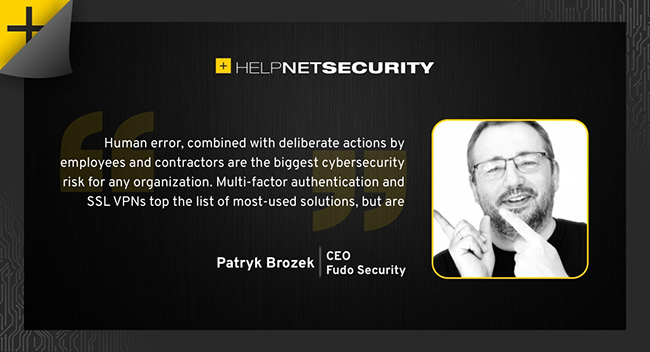42% of security leaders said the pandemic has changed their cybersecurity priorities
Fudo Security published the results of it survey, enlisting the unique perspectives of a diverse, select group of CISOs, senior cybersecurity executives and industry decision-makers from around the globe including the US, Europe, Asia and MENA. More than 42% said the pandemic has changed their cybersecurity priorities.

Survey respondents reported that more than 77% of their employees have been working remotely this year and they expect this to continue and not ask employees to return to the office at all.
Preferred remote access solutions
An overwhelming majority are relying on multi-factor authentication (84.3%) and SSL VPNs (81.9%) for secure remote access. 57.8% utilize identity and access management (IAM), and 50.6% deploy privileged access management (PAM).
Rounding out the top remote access security solutions in use are virtualization systems with remote access (49.4%) and session monitoring and recording (37.3%).
The four most desired features in a secure remote access solution were: authentication and authorization/MFA, encrypted connection, single sign on, and user access gateway (website) for easy access.
Pandemic cybersecurity priorities: Key findings
- 22.9% experienced a remote attack or disruption since the beginning of theCOVID-19 period in March 2020
- The greatest perceived threats were malware (28.9%), misuse by staff (26.5%) and threats related to vendors and other third parties (21.7%)
- 28.9% said they have invested in new tools but still feel inadequately protected
“Human error, combined with deliberate actions by employees and contractors are the biggest cybersecurity risk for any organization. Multi-factor authentication and SSL VPNs top the list of most-used solutions, but are proving to be insufficient,” said Patryk Brozek, CEO of Fudo Security.
“While there is no perfect tool in the reality we are living in, a lean, PAM-based secure remote access solution enables enhanced cyber resiliency and Zero Trust network access, effectively monitoring user activity that is crucial to securing the future,” Brozek said.